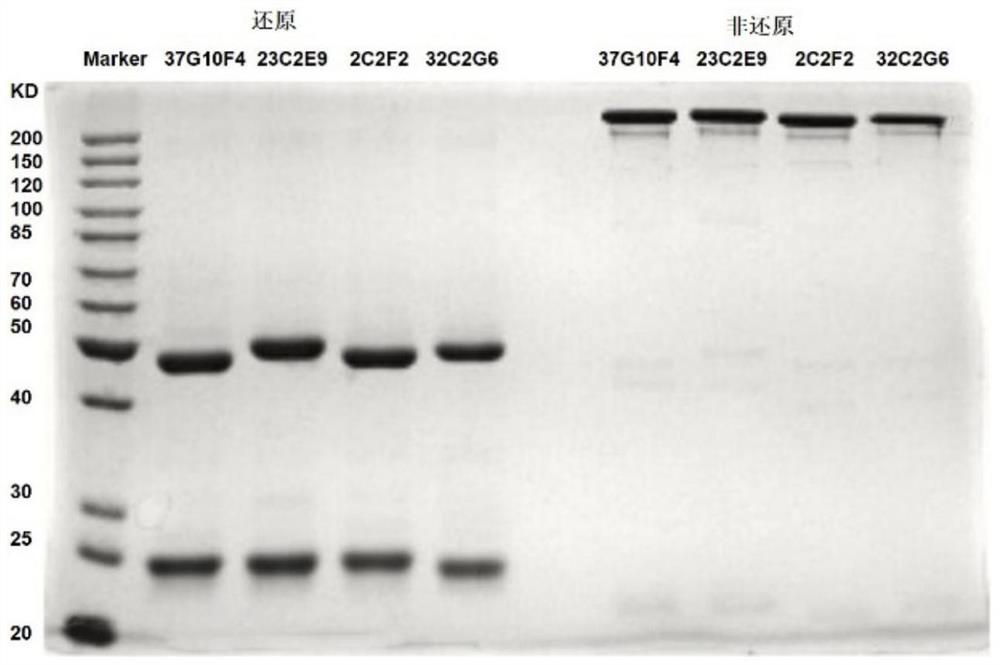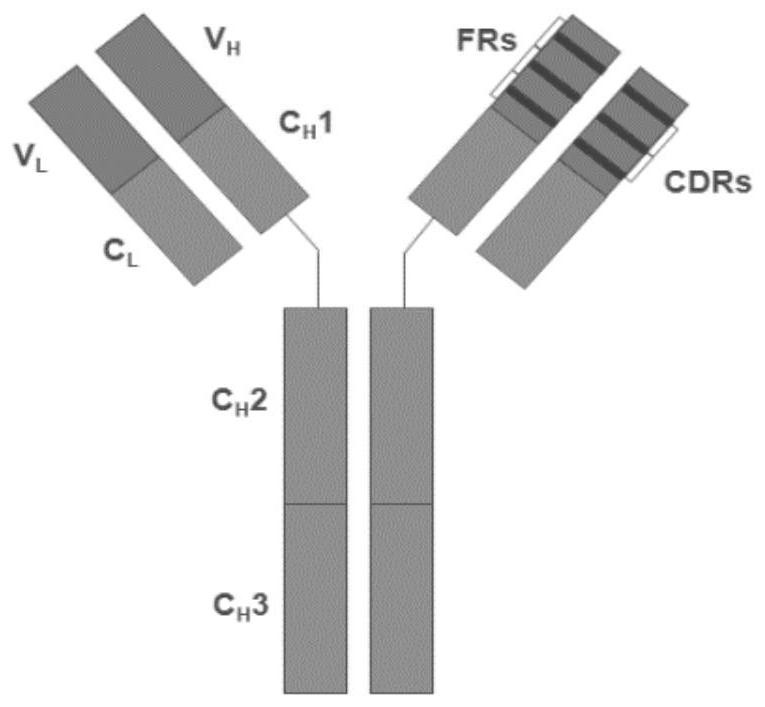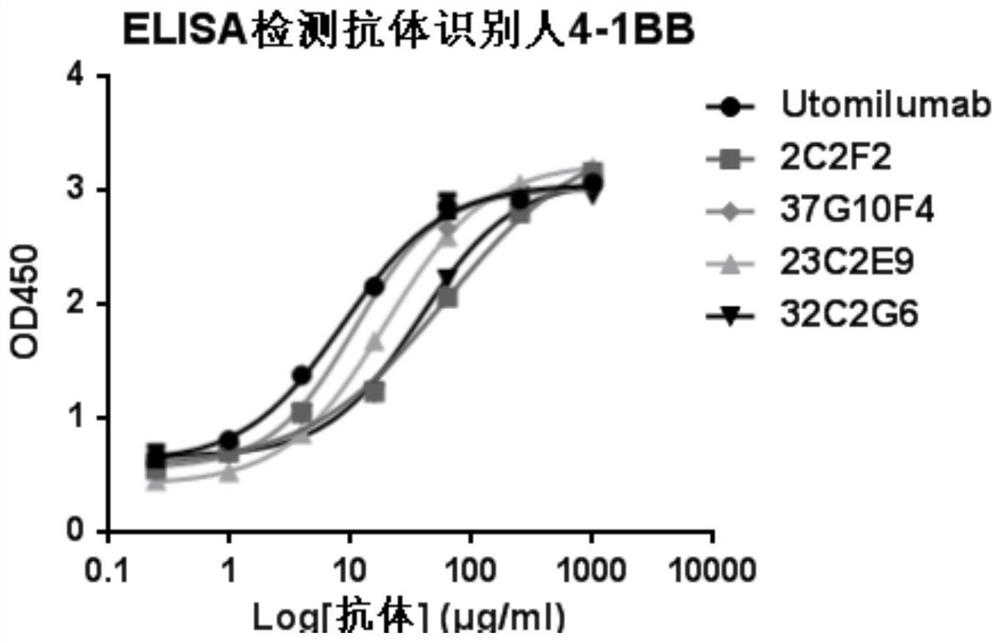Application of humanized antibody for resisting 4-1BB
A technology of antibodies and antigens, applied in the direction of antibodies, anti-animal/human immunoglobulins, applications, etc., can solve the problems that cannot meet the needs of immunotherapy methods, and are few in number, and achieve the effect of a wide range of therapeutic uses
- Summary
- Abstract
- Description
- Claims
- Application Information
AI Technical Summary
Problems solved by technology
Method used
Image
Examples
Embodiment 1
[0122] Embodiment 1, the preparation of hybridoma antibody
[0123] 1.1 Immunization of mice
[0124] Three Balb / c mice and three C57b1 / 6 mice aged 4 to 6 weeks were selected, and the mice were immunized with human 4-1BB extracellular segment (positions 24-186 of SEQ ID No.5) as antigens. Immunization once every 2 weeks, a total of 3 times of immunization. After the third immunization, the blood was collected from the tail vein, and the antibody production was detected by indirect ELISA. The appropriate immunized mice were selected, and the eyes were removed and then sacrificed by decapitation. The spleen cells of the mice were aseptically removed, and the cells were fused according to the conventional method to prepare the antibody. Human 4-1BB monoclonal antibody hybridoma cell line.
[0125] 1.2 Hybridoma Screening
[0126] Anti-human 4-1BB monoclonal antibody hybridoma cells were screened by ELISA. ELISA plates were coated with 10 μg / ml human 4-1BB (SEQ ID No. 5), over...
Embodiment 2
[0146] Example 2. Antibody humanization and scFv-Fc antigen-binding fragment property identification
[0147] Secreted antibody 37G10F4 was selected from panning as described in the present invention. Analyze the antibody gene sequence, and then design a reasonable humanized antibody through a series of analyzes such as homology modeling and optimization of antibody Fab, surface scanning to determine the humanized mutation site, virtual mutation and molecular dynamics simulation, and determination of key amino acids. Through humanization transformation, 12 candidate antigen-binding fragments in the form of scFv-Fc (human IgG4) were obtained for further identification as described in this example. Express and purify the candidate scFv-Fc molecule, and then identify it in ELISA (including identifying its ability to recognize human and monkey 4-1BB, see the relevant steps in Example 1 for specific methods), as shown in Table 4, and the ELISA results are as follows Figure 5 and ...
Embodiment 3
[0152] Example 3, IgG humanized antibody
[0153] The exemplary antibody Hanke10F4 identified in this example was humanized from the hybridoma-secreted antibody 37G10F4, that is, converted from scFvB60103 in Table 4. This example will detail the expression and purification of Hanke10F4, followed by identification in ELISA, FACS, luciferase reporter gene assay, T cell activation system.
[0154] 3.1 Antibody expression and purification
[0155] According to the gene sequence obtained by sequencing, the full-length gene sequence was synthesized. The heavy chain coding gene of the Hanke10F4 antibody is shown in SEQ ID No.3, and the light chain coding gene of the Hanke10F4 antibody is shown in SEQ ID No.4.
[0156] The 1-351th positions of SEQ ID No.3 are the coding genes of the heavy chain variable region VH, wherein the coding sequences of CDR1, CDR2 and CDR3 are respectively as the 91-105th and 148-192nd positions of SEQ ID No.3 , as shown in bits 292-318.
[0157] The 1-321...
PUM
 Login to View More
Login to View More Abstract
Description
Claims
Application Information
 Login to View More
Login to View More - R&D
- Intellectual Property
- Life Sciences
- Materials
- Tech Scout
- Unparalleled Data Quality
- Higher Quality Content
- 60% Fewer Hallucinations
Browse by: Latest US Patents, China's latest patents, Technical Efficacy Thesaurus, Application Domain, Technology Topic, Popular Technical Reports.
© 2025 PatSnap. All rights reserved.Legal|Privacy policy|Modern Slavery Act Transparency Statement|Sitemap|About US| Contact US: help@patsnap.com



